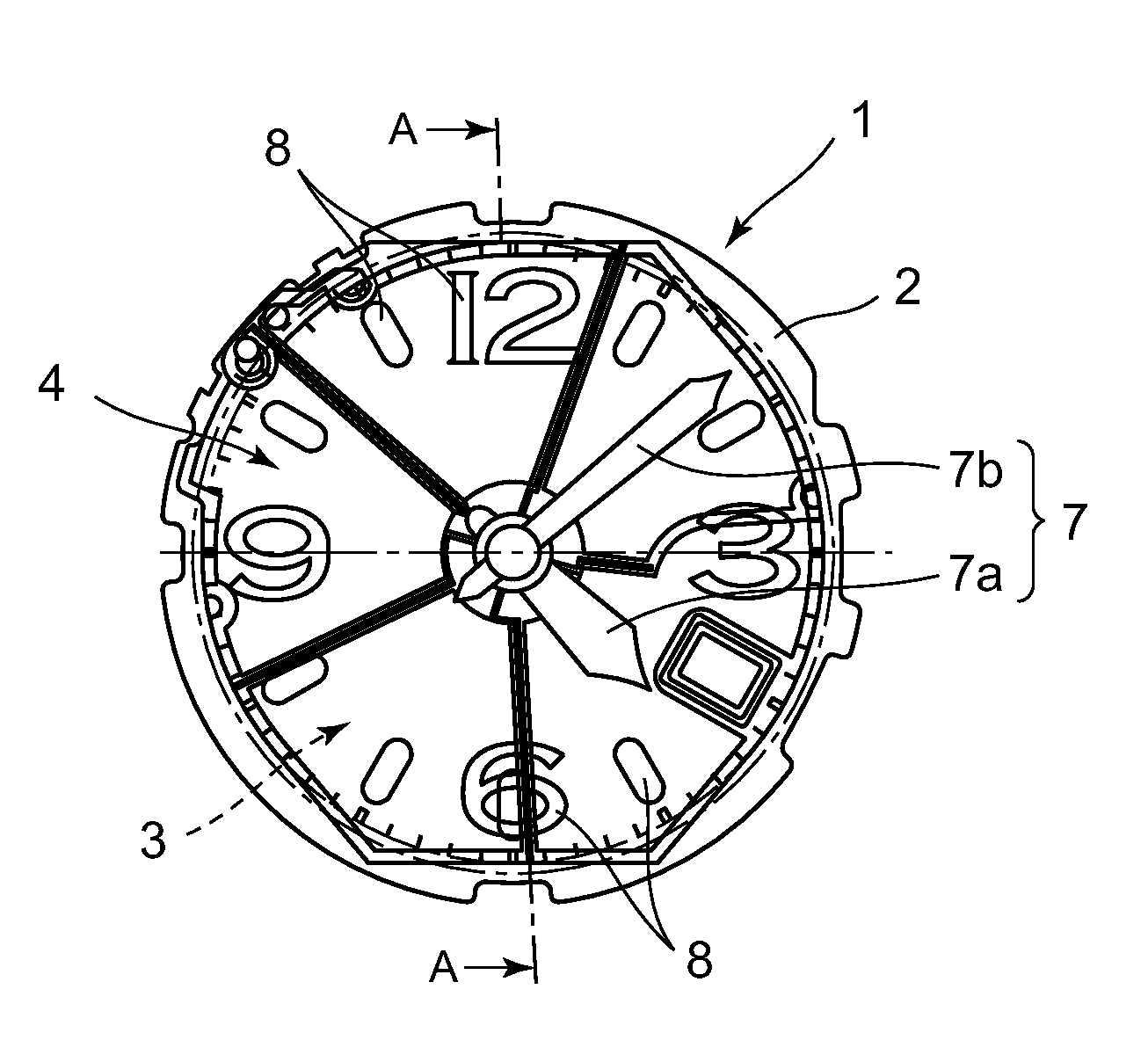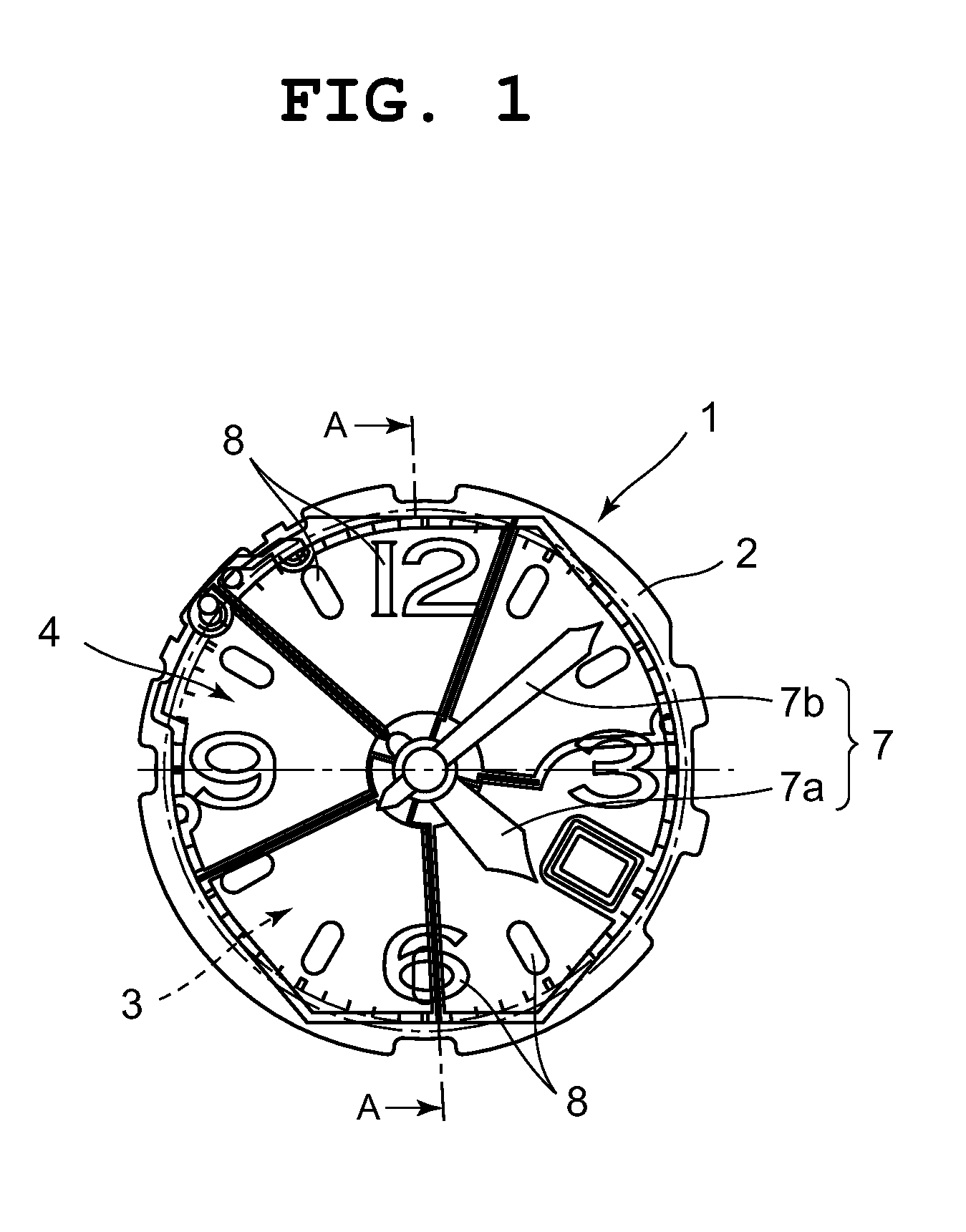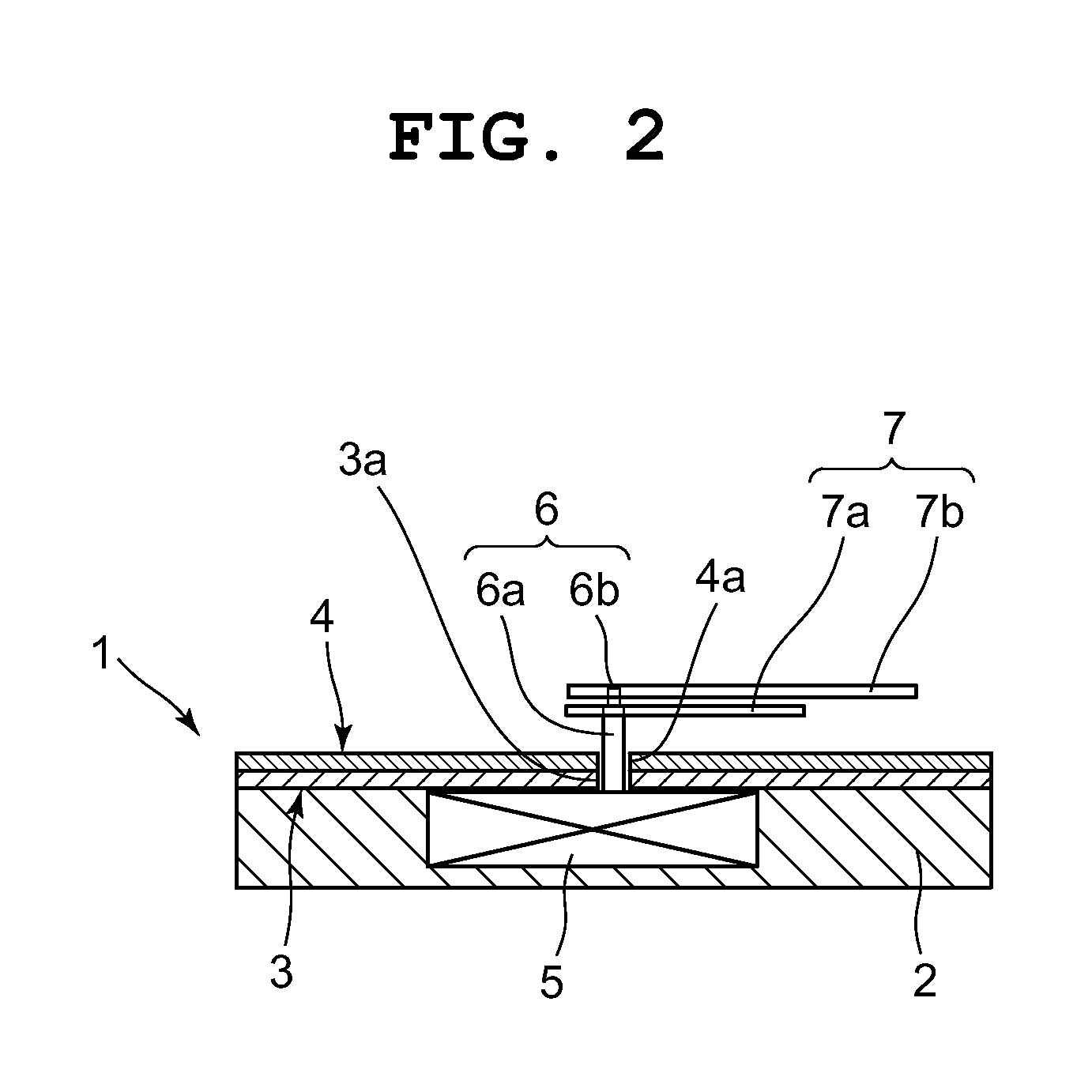Solar panel
a solar panel and solar energy technology, applied in the field of solar panels, can solve the problems of increasing the loss of generated power, significantly decreasing the light-receiving area of each solar cell, and reducing the light-receiving area, so as to reduce the loss of electric power, increase the light-receiving area, and enhance power generation efficiency
- Summary
- Abstract
- Description
- Claims
- Application Information
AI Technical Summary
Benefits of technology
Problems solved by technology
Method used
Image
Examples
first embodiment
[0025]A first embodiment in which the present invention has been applied to a pointer-type wristwatch is described below with reference to FIG. 1 to FIG. 6.
[0026]The wristwatch includes a timepiece module 1, as depicted in FIG. 1 and FIG. 2.
[0027]The timepiece module 1 has a housing 2 and is arranged in a wristwatch case (not shown).
[0028]The housing 2 has a solar panel 3 arranged on the upper surface thereof, and the solar panel 3 has a dial plate 4 arranged on the upper surface thereof, as depicted in FIG. 1 and FIG. 2.
[0029]Also, the housing 2 has a timepiece movement 5 provided therein.
[0030]The timepiece movement 5 is structured to more pointers 7 such as an hour hand 7a and a minute hand 7b by rotating a pointer shaft 6.
[0031]In this case, the dial plate 4 is made of a transparent or translucent film, and is formed in a substantially circular shape, as depicted in FIG. 1.
[0032]The dial plate 4 has hour characters 8 provided on an edge portion on the upper surface thereof with ...
second embodiment
[0115]Next, a second embodiment in which the present invention has been applied to a wristwatch is described below with reference to FIG. 7 and FIG. 8.
[0116]Note that components identical to those of the first embodiment depicted in FIG. 1 to FIG. 6 are provided with the same reference numerals for description.
[0117]As depicted in FIG. 7 and FIG. 8, a solar panel 30 of the wristwatch includes a plurality of connection sections 31 to 35 structured differently from the first embodiment. Except for this point, the solar panel 30 is identical in structure to that of the first embodiment.
[0118]That is, as depicted in FIG. 8, the plurality of connection sections 31 to 35 are each formed of a conductive paste, and connect the lower electrode 22 of one of solar cells adjacent to each other among the solar cells 11 to 16 and the upper electrode 24 of the other solar cell adjacent thereto.
[0119]In this case, among the solar cells 11 to 16 adjacent to each other, the first solar cell 11 and th...
PUM
 Login to View More
Login to View More Abstract
Description
Claims
Application Information
 Login to View More
Login to View More - R&D
- Intellectual Property
- Life Sciences
- Materials
- Tech Scout
- Unparalleled Data Quality
- Higher Quality Content
- 60% Fewer Hallucinations
Browse by: Latest US Patents, China's latest patents, Technical Efficacy Thesaurus, Application Domain, Technology Topic, Popular Technical Reports.
© 2025 PatSnap. All rights reserved.Legal|Privacy policy|Modern Slavery Act Transparency Statement|Sitemap|About US| Contact US: help@patsnap.com



